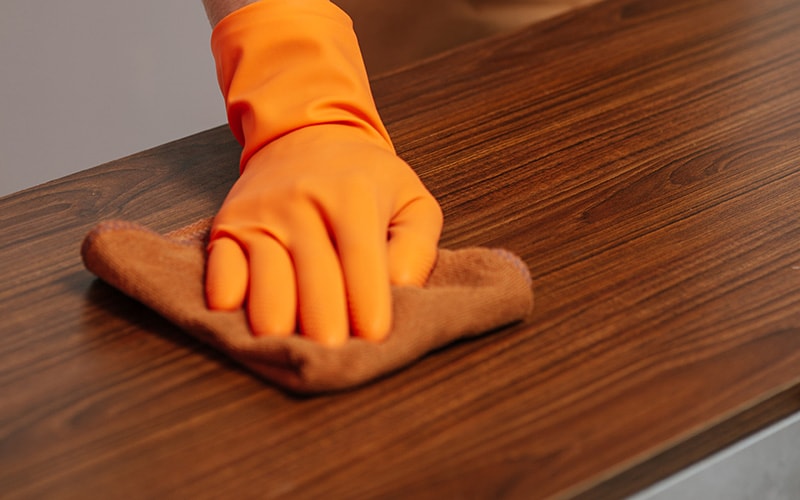Old wood furniture carries charm and character. But over time, it can collect dust, grime, and stubborn stains that dull its beauty. With the right care, you can revive the natural glow of wood furniture without damaging the finish.
In this article, we’ll walk you through seven effective methods to clean and restore your old wood furniture.
The Importance of Regularly Cleaning Wood Furniture
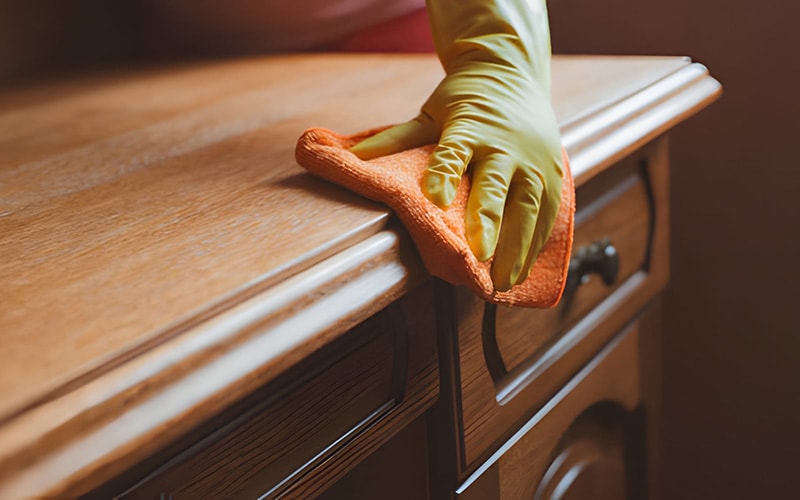
Before we talk about cleaning and maintaining your old furniture. It’s important to understand the basics of cleaning wooden furniture.
1. Benefits of Cleaning Furniture
Wood furniture is beautiful, sturdy, and long-lasting. However, it is susceptible to water damage, coffee stains, and eventual wear and tear. Regularly cleaning your furniture will ensure that it retains its original aesthetic and finish.
Cleaning also prevents termites and other insects from invading your furniture. In fact, a well-maintained and clean wood table will last for over a century.
2. Importance of DIY Cleaning
You can hire a professional to clean, polish, or restore your wood furniture. But remember, you still need regular maintenance. So, it’s better to clean wood furniture yourself. Not only does it save you money in the long term, but it also becomes easier as you develop a good cleaning technique.
The easiest way to clean wood furniture is with a dry microfiber cloth to remove the dust and dirt from your furniture.
3. When to Get Professional Help?
Yes. We just recommend that you stick to a DIY (do it yourself) method for cleaning wood furniture. However, we also understand that it’s not always practical for people. Some people are hesitant to work with wood, and others can’t dedicate the time.
Going the professional route is especially better if you have a particularly old (or even antique) furniture set. For everything else, try to do it yourself first.
Pro Tips Before Cleaning Furniture
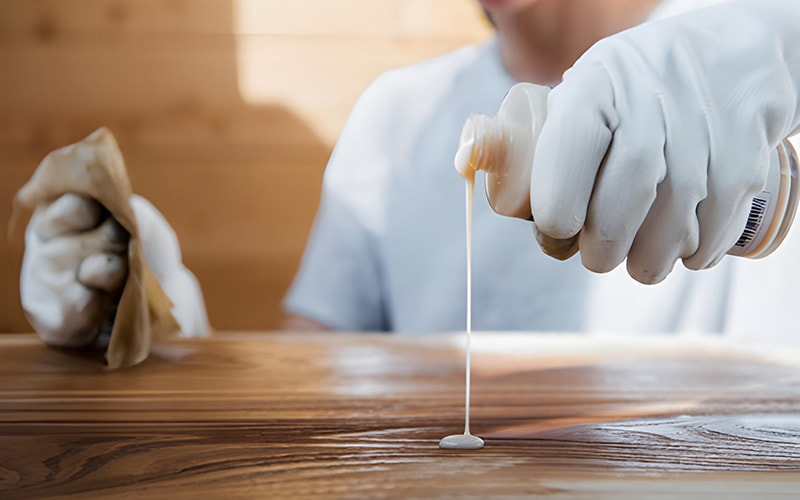
There are some small preparatory steps you need to take before you start cleaning. Assess the state of your old wood furniture and gather all the required cleaning materials beforehand.
Damage Assessment
Assess the condition of your wood furniture before you start cleaning. Old furniture can have small chips and scratches that can erode over time. It’s best to give your furniture a thorough inspection whenever you get the chance.
Here is a quick list of things to look out for.
- Water Stains – These will generally show up as dim circles that are visible at certain angles.
- Grime Build-Up – Grime is a layer of grease or oil that slowly accumulates on all surfaces.
- Finish Damage – The finish on wood furniture can erode over time, revealing bare wood sections that can absorb water.
- Wood Defects – Wood is a natural material, so of course, there will be some holes and gaps here and there. Occasionally, these gaps can grow into large cracks.
- Termite Damage – Although it’s rare, sometimes termites can make their way into your furniture. Termite damage is usually denoted by buckling or blistering of the surface.
If you are cleaning a table, remember to inspect the underside. It’s an inconspicuous spot and only takes a few seconds to inspect.
Materials Required
The exact list of furniture cleaning materials will depend on your cleaning method. Some basic techniques are designed for cleaning surface dirt. While more complex cleaning methods are aimed at preparing the wood for furniture polish.
Here are some common materials that are used in most wood cleaning methods.
- Dry Cleaning Cloth (Microfiber, Soft Cotton, etc.)
- Cleaning Solution (Warm Water, Mild Soap, Mineral Spirits, etc.)
- Wet Drying Cloth (Cotton or Microfiber Towel)
- Wood Finish (Mineral Oil, Furniture Wax, etc.)
7 Easy Cleaning Methods for Antique Furniture
Cleaning wood furniture might seem like a difficult task. But once you get the hang of things, it’s actually a fun and even therapeutic activity.
Here are our seven favorite ways to clean wood furniture.
1. Dry Cleaning Method
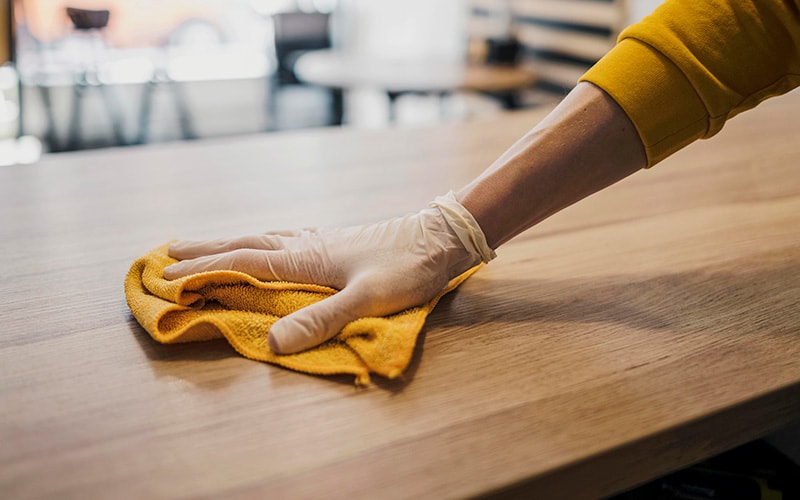
The simplest and easiest way to clean wood furniture is to rub it with a dry cloth. We recommend this method for furniture with minimal grime and dirt build-up. It doesn’t use any harsh chemicals, detergents, or water. So, there is zero chance of accidentally damaging the wood finish.
Use a soft cotton or microfiber cloth and gently wipe the entire surface. You can wrap the microfiber cloth around a popsicle stick to clean those hard-to-reach areas.
2. Minimal Water Cleaning Method
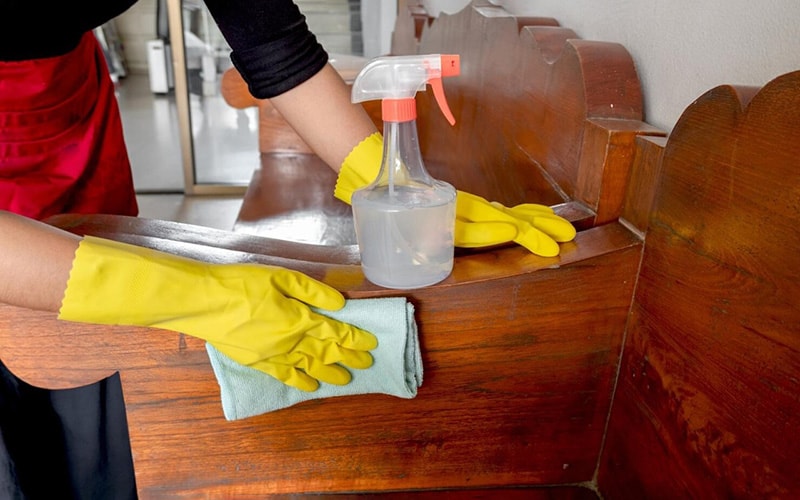
Use a soft cloth and dip it into some warm water. Then, squeeze out all the excess water until you have a mildly damp piece of cloth. Scrub your wood furniture in a circular motion. If you see dirt accumulating on the cloth, give it a rinse in warm water and repeat.
Once you’re done cleaning the wood furniture, use a dry microfiber cloth to soak up the excess water. Microfiber cloths are great for this application as they don’t leave water stains.
Water and wood don’t go well together. Moisture can seep into the natural wood and cause it to warp. However, water is the easiest way to remove dust and dirt from furniture, especially around those intricate carvings, common on antique pieces. The dry cloth method is less effective when you need to scrub a stain.
Remember, you want a moist cloth. Excessive water use will result in permanent wood damage.
3. Soap Cleaning Method
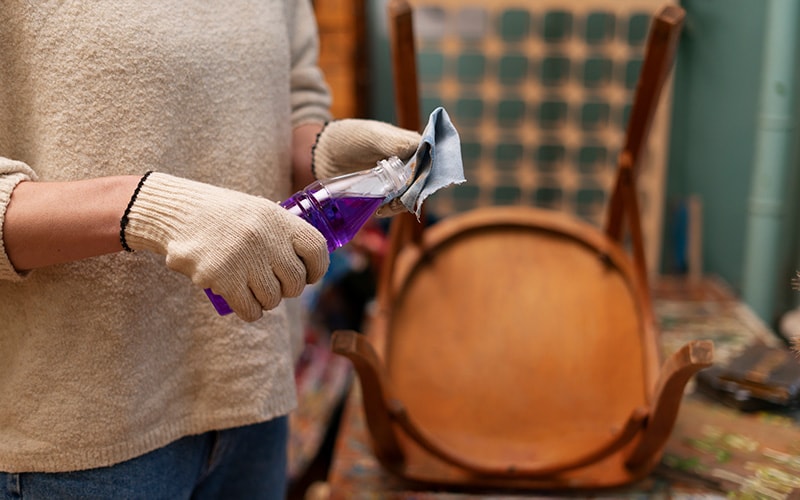
Mix a mild soap in some water to create a diluted cleaning solution. We recommend using common dish soap. It dissolves quickly and has antimicrobial ingredients like lemon. Gently rub the entire surface with your soapy liquid and then clean with a damp cloth.
If you have some tough stains, we recommend using a hydrogen peroxide solution. Hydrogen peroxide is a powerful bleaching agent, so use a 3% or 5% solution. And dilute it further with some water. Wear gloves when handling hydrogen peroxide and use a soft sponge to gently scrub the wood furniture.
4. Mineral Spirits Cleaning
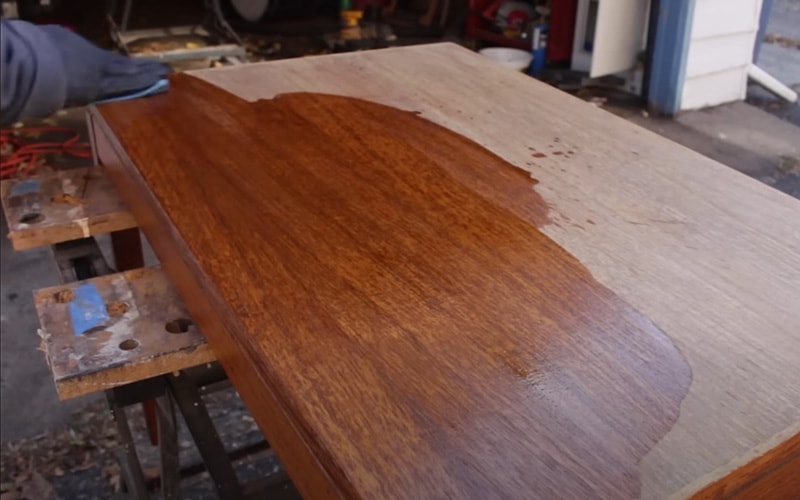
Mineral spirits, also known as petroleum spirits, are used as paint thinners and grease removers. Woodworkers across the world swear by this technique, and we agree. You don’t want to overuse mineral spirits, aim for a moist cloth.
Use a few drops of your preferred mineral spirits on a microfiber cloth and give your wood furniture a full rubdown. It’s a non-destructive cleaning solution, meaning it doesn’t strip the natural wood finish off your antique furniture.
5. Wax Cleaning
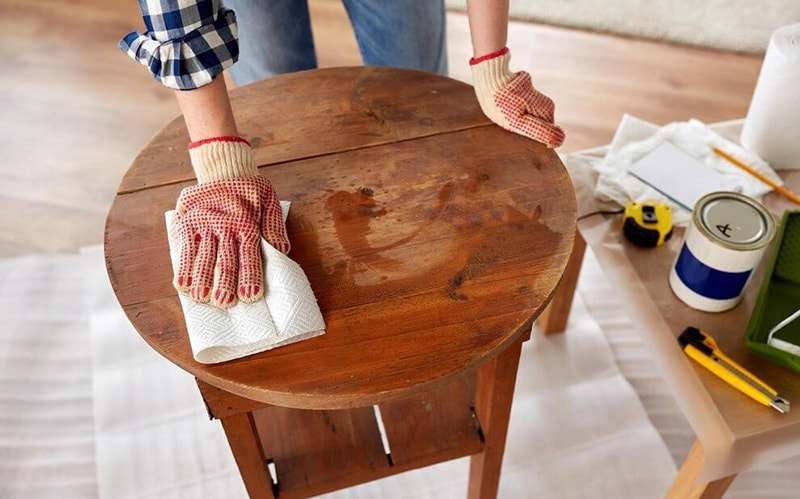
After you dust your old wood furniture with a dry cloth, coat it in wax to protect it. Furniture wax acts as a cleaning and protection tool. As you rub the wax into the furniture, it dissolves the old wax along with the dirt particles and replaces it with a fresh coat.
Grab a chunk of wax using a cotton cloth, steel wool, or a piece of gauze. Carefully go over the entire piece with the wax-charged cloth. Make sure you get the wax into those tight corners and intricate carvings.
Afterwards, take a microfiber towel and wipe away the excess wax. This step also counts as polishing. The great thing about the wax cleaning method is that it results in a far superior wood finish. You clean your furniture and get a shiny wood surface all in one step.
We prefer disposable non-woven cloths for this application. Wax is messy, and once it gets into a piece of cloth, there is no getting it out. You can use a clean rag, but it’s not always practical.
6. Using Commercial Furniture Cleaners
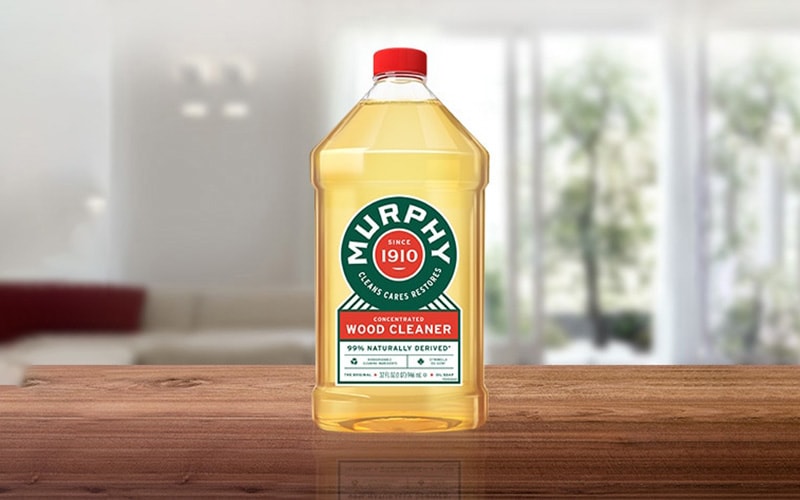
There is no shortage of commercial furniture polish and cleaners on the market. They are typically marketed as an all-in-one solution that will clean and polish your wood furniture. Unlike wax cleaning, which takes a lot of time, furniture cleaners accomplish the same task in a matter of seconds.
A few drops of cleaner go onto your wood surface, followed by a thorough polishing using a cotton or microfiber cloth. Now, there are some issues with the commercial cleaner. Their main drawback is the stacked ingredients list.
Many commercial cleaners use silicone in their wood polish. Siliconeslowly embeds itself into the wood grain. While it’s not harmful, it can make future cleaning and restoration harder. We recommend commercial furniture cleaners that are oil-based.
Natural cleaning products use mineral oil as the base. Additional ingredients include lemon oil, linseed oil, and natural fragrances. If you use an oil-based cleaner, make sure to wipe the excess oil with a high-absorbency cloth like a microfiber towel.
7. Homemade Lemon Cleaning Solution
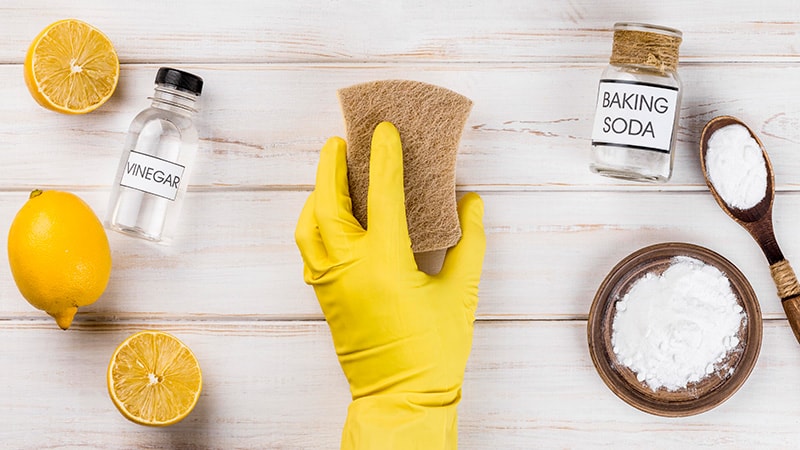
Now, here is a fun fact. You can make your own furniture cleaner at home. The simplest recipe has three ingredients: lemon oil, olive oil, and white vinegar. That’s it! Mix it up and put it in a spray bottle.
Homemade furniture cleaner is just as good as any commercial solution. It wipes away dust, dirt, and grime, and leaves a nice fresh lemon scent behind.
If you have tougher stains, use baking soda and some water to make a scrubbing paste. Next, you need some elbow grease to really rub it into the wood furniture. Then wipe everything with a soft cloth and apply some of your homemade lemon oil polish.
Removing Stains and Residue from Wood Finish
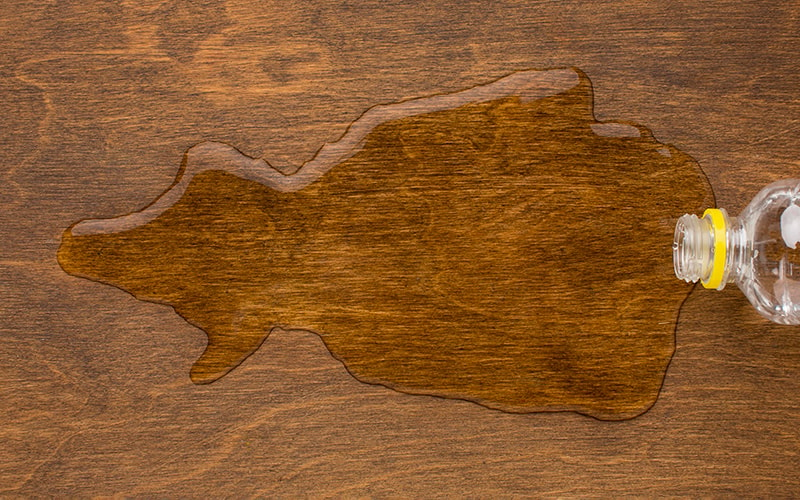
Cleaning is a basic process that is designed to remove surface-level dirt and grease from your old wood furniture. For deeper stains, discolorations, and tough residue, you need some extra steps.
Use the following methods in the suggested order to remove those stubborn stains.
1. Scrubbing
Your first step should always be a good scrub with some mild dish soap. It’s the least destructive way to remove stains and residue. Surface-level stains and residue are usually a result of sugar spills, melted candle wax, or natural oil build-up.
Feel free to apply pressure when you are scrubbing. Unless you are using an abrasive cleaner, you will not damage the solid wood. You can even use some steel wool, but it will scratch soft wood furniture.
2. Sanding
Now, if scrubbing didn’t help, you will have to move on to stage two-sanding. Use a high-grit sandpaper to remove the wood finish. Keep sanding until you hit the bare wood. Dust the wood furniture with a microfiber cloth and examine the surface.
Most stains are on the surface, so sanding should get rid of them. Afterwards, apply a nice wood oil to get the desired finish. At this point, you have moved away from cleaning and are now into wood restoration territory.
3. Bleaching
Bleaching is a safe stain removal method. But it is particularly difficult to execute. First, sand your antique wood furniture. If the stain is still present, we move on to bleaching. Mix some oxalic acid with water to create a thin, spreadable paste.
Paint a thin layer over the dark stains with the oxalic acid. Let it sit for an hour, then wipe it with a clean cloth.
Careful, if you use too much oxalic acid, you will over-bleach the wood. Resulting in a white bleach stain instead of a black water one. In such cases, it’s better to cover the entire wood furniture with oxalic acid for a uniform bleach.
Afterward, apply a wood polish or mineral oil to protect and seal the furniture.
Polishing and Protecting Your Old Wood Furniture
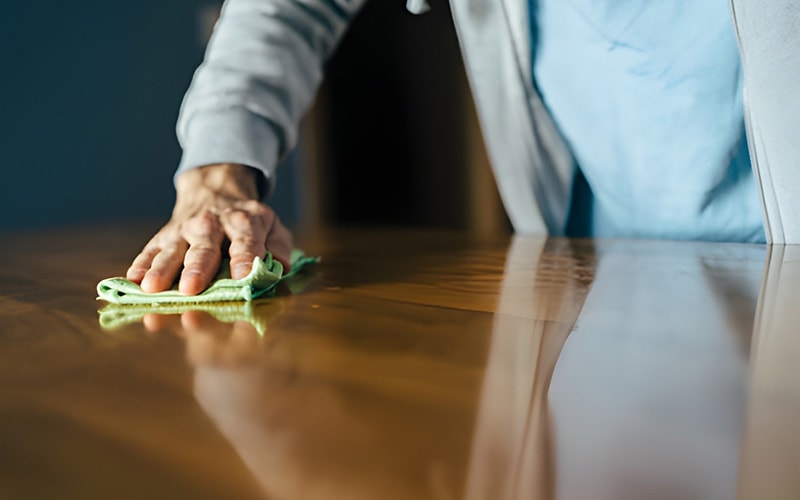
Polishing is a cleaning and preservation technique. A thorough polishing will remove old dust and dirt from the wood furniture and give it a brand new sheen. It also forms a protective coating around the wood, protecting it from moisture and insects.
Types of Polishes
Here are the six most common types of furniture polish available on the market.
- Oil-Based Polishes – The oil penetrates the wood furniture, giving it long-lasting protection from the elements. Popular options include boiled linseed oil, teak oil, or tung oil finish.
- Varnish Wood Polish – Made from a combination of resin, oil, and alcohol. It forms a thin, clear layer on top of the wood furniture.
- Shellac Wood Polish – Natural resin made from insects. It results in one of the most durable protective layers for old wood furniture.
- Wax Wood Polish – Derived from plants or animals, natural wax penetrates the bare wood.
- Polyurethane (PU) Polish – A modern plastic sealant that protects the natural finish of antique wood furniture.
- Water-Based Polishes – A low-cost wood polish that is easy to apply and protects the natural wood color.
How to Polish Wood Furniture?
Polishing is a labor-intensive process that requires a large space and a lot of elbow grease. The process itself is fairly easy. Here are simple steps that anyone can follow.
- All polishing applications demand that you first sand your wooden furniture. Dust particles and bumps are exaggerated after polishing, so sanding is a necessary step.
- Brush away any leftover sawdust and wipe the furniture with a clean cloth.
- Apply a small amount of polish to a disposable cotton or microfiber cloth and apply it to the clean wood furniture.
- Rub gently, make sure you cover all of the furniture surface. Otherwise, you will be left with streaks.
- Wipe away the excess polish with a clean microfiber towel.
Sanding is the most labour-intensive part of the process. It makes a huge difference in the final look of the furniture. So take your time sanding all the surfaces. Another important thing to note is the polish fumes. Safely clean and polish your furniture in an open area or a well-ventilated room.
Conclusion
Wood furniture can last a lifetime. But it requires regular care and maintenance to ensure it stays that way. The simplest way to clean wood furniture is to use a soft cloth, avoid harsh chemicals, and finish with natural olive oil. For tougher stains, use mild soap solutions or commercially available wood cleaners. If you ever find yourself overwhelmed by the process, use the tips from this article to make your life easier.
Get High-Quality Cleaning Cloths from Manywell!
Manywell is the leading cleaning product manufacturer and supplier in China. We specialize in high-quality microfiber towels and cotton cloths that are ideal for cleaning wood furniture. If you’re looking for something disposable, check out our cost-effective & eco-friendly non-woven cloth rolls.
All of our products are fully customizable. So you can get the perfect-sized cleaning cloth with your brand logo and design. Contact us now!

